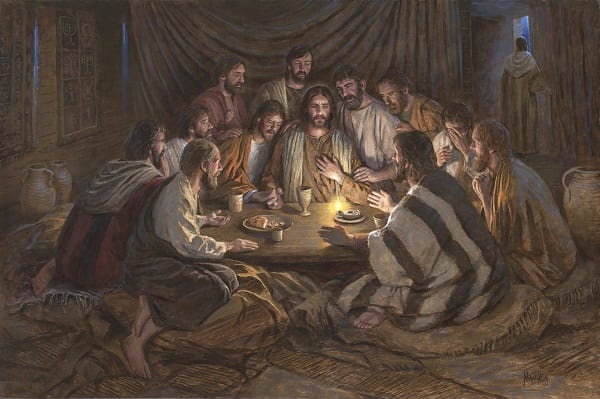
The Institution of the Eucharist
When the time had come for our Lord Jesus Christ to fulfill His mission of redemption, He chose to do it at the same time of the Jewish Passover, so that the Old Passover might be fulfilled by His New Passover, which is His “passing over” to His Father in heaven, through His Suffering, Death and Resurrection. In anticipation of His New Passover, Jesus celebrated the Last Supper with His disciples, where He washed their feet and gave them His commandment of love: “I give you a new commandment: love one another. As I have loved you, so you also should love one another.” (John 13:34)
At the Last Supper, Jesus instituted the Eucharist so that He could (1) leave His disciples the pledge of His love, (2) to remain with them always, and (3) to make them sharers in His Passover. (cf. CCC 1337) He also commanded His Apostles: “Do this in memory of me.” (Luke 22:19, cf. 1 Cor 11:24). In doing so, Christ did not only ask His disciples to remember Him and what He did; what it meant was for the Apostles and their successors to celebrate His memorial – a memorial of His Life, Death, Resurrection and His intercession in the presence of His Father in a liturgical celebration. (cf. CCC 1341)
From the beginning, the Church has been faithful to the Lord’s command. It was on the first day of the week, Sunday, the day of Jesus’ Resurrection, that the Christians gathered to “break bread.” From that time on, the celebration of the Eucharist has been continued; so that today we encounter it everywhere in the Church with the same fundamental structure. The celebration of the Eucharist remains the center of the Church’s life. (CCC 1342-1343)
By celebrating the Eucharist, we offer to the Father what He has given us: we offer the gifts of bread and wine which, by the power of the Holy Spirit and by the words of Christ, have become the Body and Blood of Christ. Thus, in the Eucharist, Jesus Christ is really and mysteriously made present. (CCC 1357)
The Eucharist is (1) our thanksgiving and praise to the Father (CCC 1358), (2) a sacrifice because it makes present the Sacrifice of Christ on the Cross (CCC 1366), (3) the presence of Christ by the conversion of the bread and wine into Christ’s Body and Blood. (CCC 1375)
The real presence of Christ in the Eucharist begins at the moment of consecration (i.e., at the Words of Institution) and endures as long as the Eucharistic species subsist. Christ is present whole and entire in each of the species and in each of their parts. The Catholic Church has always offered and still offers to the Sacrament of the Eucharist the cult of adoration, not only during Mass, but also outside of it, reserving the consecrated hosts with the utmost care, exposing them to the solemn veneration of the faithful, and carrying them in procession. (CCC 1377-1378)